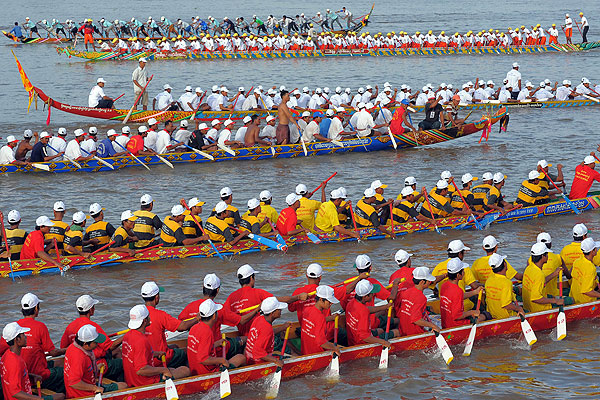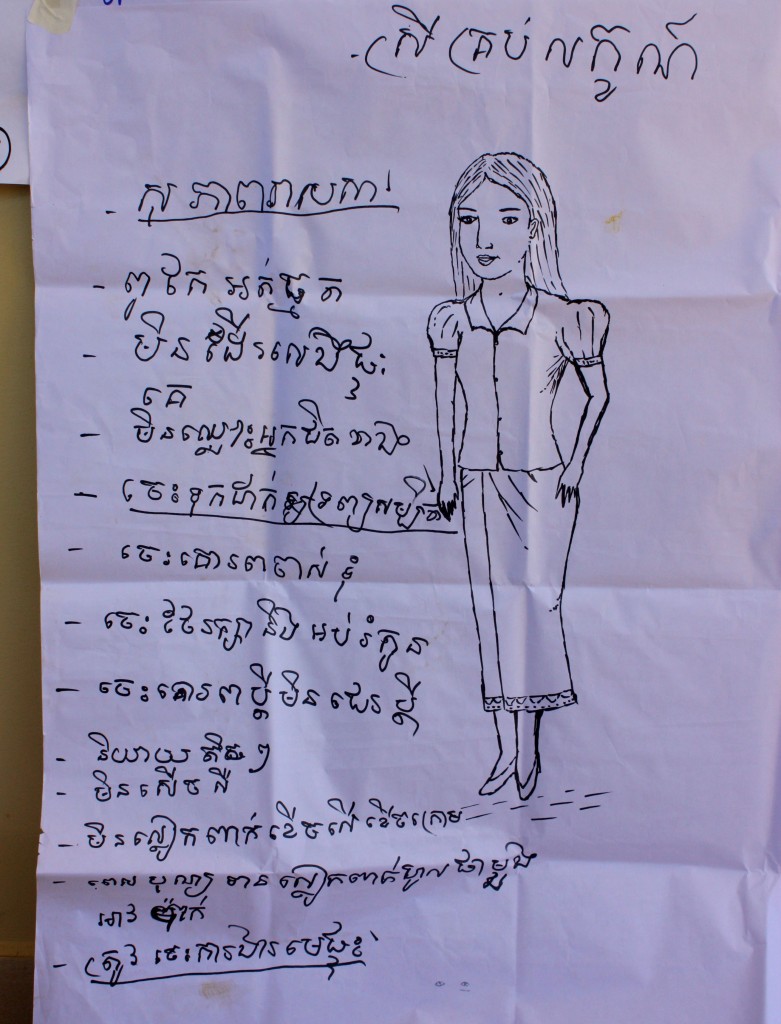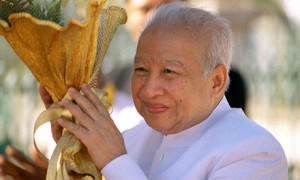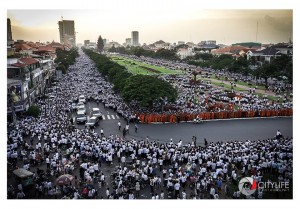Today is the last day of the Water Festival, a highly celebrated Khmer traditional holiday that dates back to the 12th century. This festival marks an important natural occurrence – the reversing flow between the Tonle Sap and the Mekong River. The Tonle Sap is a vital source of livelihoods for the Cambodian people and as we usher in the fishing season, the Water Festival is celebrated to give thanks to the rivers for providing the country with fertile land and abundant fish.
Unfortunately this year’s festivities have been cancelled due to the King Father Sihanouk’s passing last month, although it is still a national holiday for the people.
In this annual three-days celebration, the country immerses in general merriment and millions of spectators from all over the country visit Phnom Penh for the dragon boat races that take place along Sisowath Quay. Folks from the rural areas come to support their dragon boat teams and for many, it is the only occasion to explore the city.

The boat races are intense, with hundreds of dragon boats from all over the country taking to the river each year to compete. (Source: Apro)
After a long day of racing and cheering for their teams, people stay out late to see the fireworks and the parade of floating boats that are illuminated with colorful lights, each representing an important government institution or ministry.

Brightly illuminated boats representing the Royal Palace (left) and the Ministry of Education, Youth and Sport (right). (Source: Tan Reasmey/Wordpress)
This festival coincides on the full moon of November. The people therefore pray to the full moon for a good year ahead. Every Cambodian family sets up a table at their home with offerings such as ambok (pounded rice flakes), coconut, and flowers. The eating of the ambok is an important part of the celebration, as it is especially made only for this occasion.




